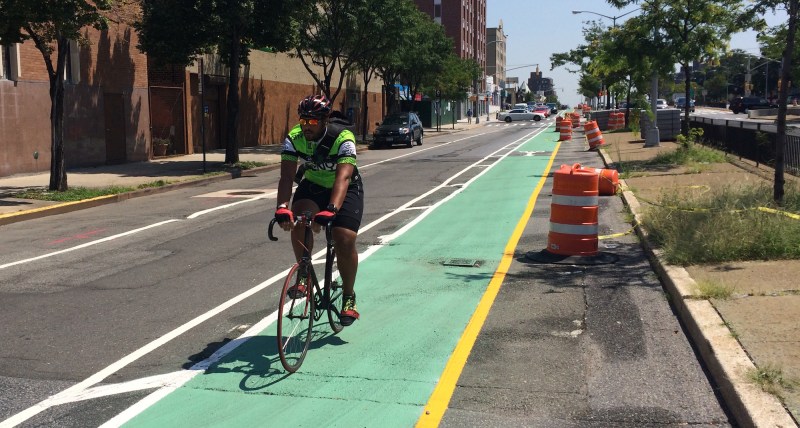The Final Phase of the Queens Boulevard Safety Redesign is On Ice For This Year At Least

The de Blasio administration has abandoned — at least for this year — the completion of its signature Vision Zero project, announcing on Tuesday that the Forest Hills portion of Queens Boulevard will not be made safer for drivers, pedestrians and cyclists.
The last phase of the four-stage project was all set to be completed this year — until Mayor de Blasio intervened in February and ordered one last review of the project to accommodate Queens Council Member Karen Koslowitz, an opponent who was pushing an already-rejected design for the segment between Yellowstone Boulevard and Union Turnpike [PDF].
“What’s the harm of giving it a look?” the mayor said at the time. “We’ll consider it and we’ll consider it quick.”
Not quick enough — within a month, the de Blasio administration would find itself consumed by the coronavirus pandemic, and would begin slashing line items from the Department of Transportation budget left, right and center (well, central Queens, at least).
At a City Council hearing on Tuesday, DOT Commissioner Polly Trottenberg delivered the bad news:
“There were some things we were trying to wrap up with that project before corona hit — with a design firm and state overseers,” she said, adding that it’s “on bit of a pause.”
“I don’t have totally clear answer when we move forward with that project,” she added.
Koslowitz had asked the mayor to consider a design that would to retain a lane of the Queens Boulevard service road for parking and divert the protected bike lane from the existing three phases of the project — from Roosevelt Avenue to Yellowstone Boulevard — into the median. Advocates said that plan is dumb.
“The center median idea has been rejected for years,” said Peter Beadle, a Queens Community Board 6 member and cycling activist. “This tired fantasy of car drivers has been around a long as there has been talk of fixing Queens Boulevard. It’s the classic, ‘Use the center median and stay away from our parking!’ There’s no actual thought or engineering behind it.”
The failure of the city to complete the Queens Boulevard — which DOT had said would be done in 2019, but it became part of complex negotiation between the mayor and Koslowitz over siting a jail in her district — is a stunning defeat for all road users, but mostly for the mayor himself. The first three phases of the project have reduced crashes dramatically. City statistics show that injuries from crashes dropped by 24 percent and pedestrian injuries were down 55 percent after the first phase was completed between Roosevelt and Eliot avenues.
City officials have long argued that protected bike lanes make roadways safer for all users. When such lanes are not installed, by definition, the roadway is less safe. Koslowitz did not immediately return a call seeking comment for why that’s OK.
Cristina Furlong of Make Queens Safer called the news “a surefire punch in the gut to Central Queens advocates as well as new cyclists!”
“Riders in Queens are basically being fed to the sharks, while city leaders brag and boast about the benefits of cycling,” she added. “It’s an embarassment to have shown up every single time DOT asked, and worked at countless tables, spoken at countless meetings, and promoted Queens Boulevard through many rides, including our 100+Women’s Ride, and a rally at Borough Hall with Families for Safe Streets and Council Member Koslowitz only to see these same elected officials who encouraged us, ravage every gain we’ve achieved.
“If not for Council Member Koslowitz’s stall tactic — and Mayor de Blasio’s willingness to abide it — we’d already have hundreds of new riders on Queens Boulevard,” she added.